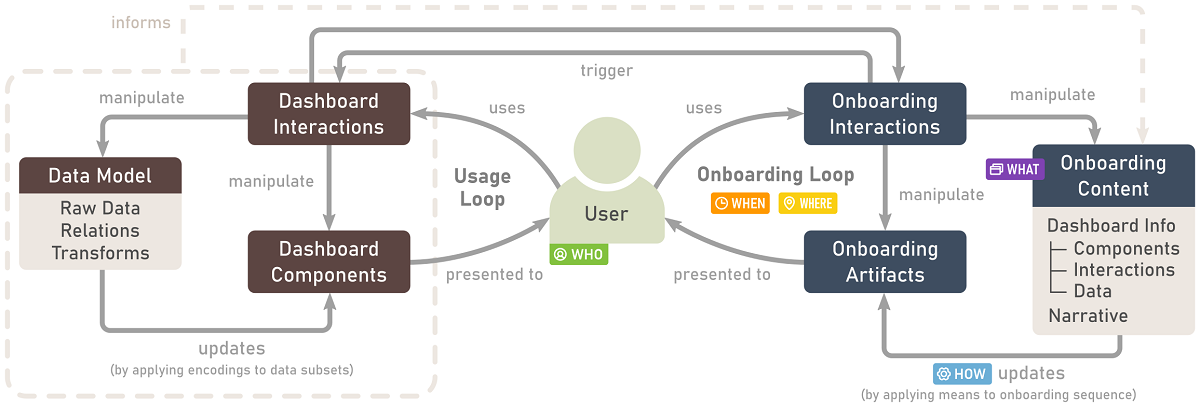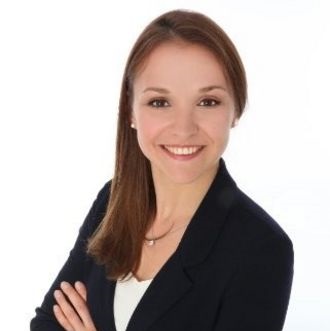
Abstract
Dashboards are used ubiquitously to gain and present insights into data by means of interactive visualizations. To bridge the gap between non-expert dashboard users and potentially complex datasets and/or visualizations, a variety of onboarding strategies are employed, including videos, narration, and interactive tutorials. We propose a process model for dashboard onboarding which formalizes and unifies such diverse onboarding strategies. Our model introduces the onboarding loop alongside the dashboard usage loop. Unpacking the onboarding loop reveals how each onboarding strategy combines selected building blocks of the dashboard with an onboarding narrative. Specific means are applied to this narration sequence for onboarding, which results in onboarding artifacts that are presented to the user via an interface. We concretize these concepts by showing how our process model can be used to describe a selection of real-world onboarding examples. Finally, we discuss how our model can serve as an actionable blueprint for developing new onboarding systems.
Citation
Vaishali
Dhanoa,
Conny
Walchshofer,
Andreas
Hinterreiter,
Holger
Stitz,
Eduard Groeller,
Marc
Streit
A Process Model for Dashboard Onboarding
Computer Graphics Forum (EuroVis '22),
41(3):
501-513, doi:10.1111/cgf.14558, 2022.
BibTeX
@article{2022_eurovis_dashboard_onboarding,
title = {A Process Model for Dashboard Onboarding},
author = {Vaishali Dhanoa and Conny Walchshofer and Andreas Hinterreiter and Holger Stitz and Eduard Groeller and Marc Streit},
journal = {Computer Graphics Forum (EuroVis '22)},
publisher = {John Wiley & Sons, Inc.},
doi = {10.1111/cgf.14558},
url = {https://doi.org/10.1111/cgf.14558},
volume = {41},
number = {3},
pages = {501-513},
month = {July},
year = {2022}
}
Acknowledgements
This work was supported in part by the FFG, Contract No. 881844: “Pro2Future is funded within the Austrian COMET Program Competence Centers for Excellent Technologies under the auspices of the Austrian Federal Ministry for Climate Action, Environment, Energy, Mobility, Innovation and Technology, the Austrian Federal Ministry for Digital and Economic Affairs and of the Provinces of Upper Austria and Styria. COMET is managed by the Austrian Research Promotion Agency FFG.” Additional support was granted by the State of Upper Austria and the Austrian Federal Ministry of Education, Science and Research via the LIT – Linz Institute of Technology (LIT-2019-7-SEE-117), and by the Federal State of Upper Austria (Human-Interpretable Machine Learning). This paper was partly written in collaboration with the VRVis Competence Center. VRVis is funded by BMVIT, BMWFW, Styria, SFG and Vienna Business Agency in the scope of COMET—Competence Centers for Excellent Technologies (854174) which is managed by FFG.





